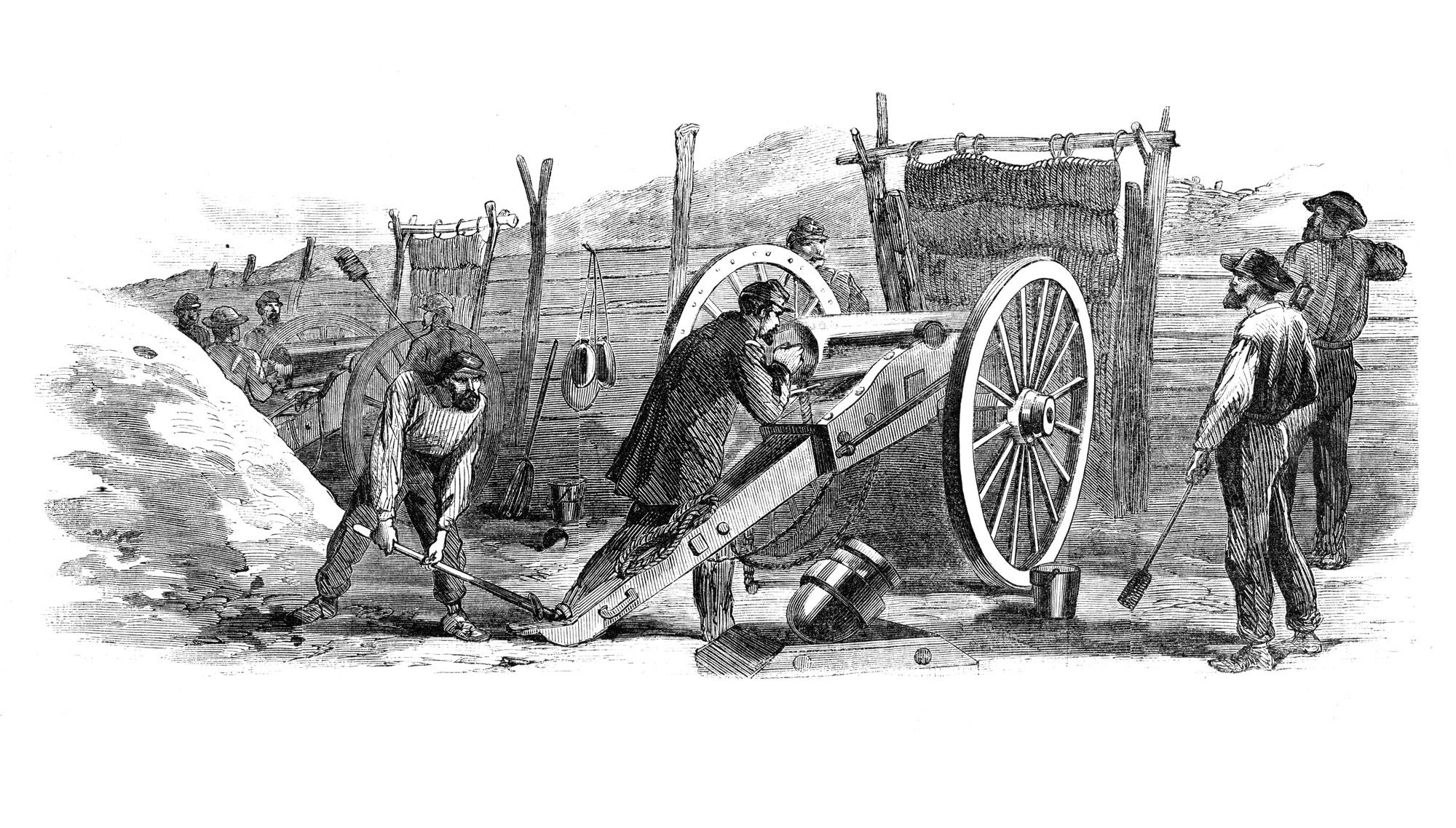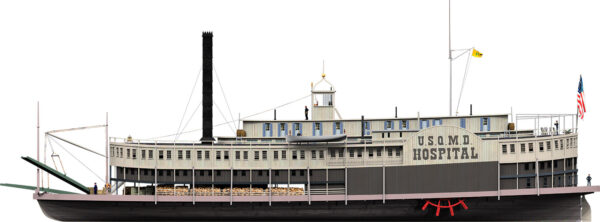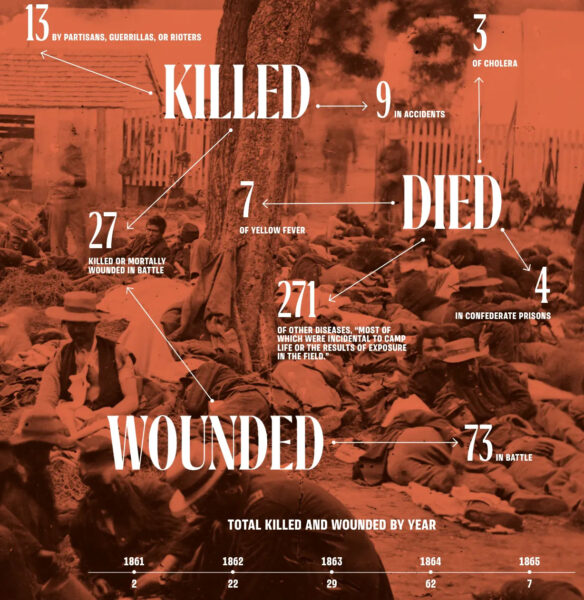On June 19, 1864, days after Ulysses S. Grant had begun his campaign against Petersburg, Virginia, Colonel Henry Larcom Abbott, commander of the army’s siege artillery, responded to an inquiry from Brigadier General John G. Barnard, the army’s chief engineering officer. Barnard had asked Abbott what he required to help protect his guns and artillerists as the opposing armies began digging in outside the strategically vital city in what would become a nine-month siege. Abbott’s response noted that enemy sharpshooters posed a serious threat—“I have had two men killed besides some wounded in my own regiment by them already”—and requested Barnard have 100 mantlets sent as soon as possible.
Mantlets—portable shelters intended to protect soldiers from enemy fire—had been around since medieval times. During the Civil War, they came in several varieties: wood, wood and iron, and rope. Each offered artillerists some degree of protection from enemy fire by covering the openings in fortifications (embrasures) through which cannons operated—while allowing guns to fire through muzzle-sized holes cut in the mantlet. The first two varieties “met with little favor” for a number of reasons, Abbott noted, including their lack of flexibility and “the dangerous splinters thrown off when struck by artillery.” He told Barnard he “decidedly prefer[red]” mantlets “made of tarred rope” which, while cumbersome, offered gunners greater concealment and protection.
Highlighted here are statistics about the mantlets Abbott and his men used during the siege, alongside other figures associated with the Union defenses there.
Shelters By the Numbers
Number of cubic yards of “ordinary” soil moved per 10-hour workday per man in constructing earthworks (when not expecting immediate battle): 6.4
Thickness (in packed earth) of a fieldwork parapet: 12-16′
Maximum suggested height of a fieldwork parapet: 8′
Height of rope mantlet muzzle opening: 20″
Width of rope mantlet muzzle opening: 16″
Estimated minimum weight (in pounds) of a rope mantlet: 500
Width of rope mantlets: 4-6′
Thickness of rope mantlets: 6″
Height of rope mantlets: 5′
Penetration of a rifled musket ball fired at 20 yards into a rope mantlet: 2-2½”
Sources
Earl J. Hess, In the Trenches at Petersburg (2009); Professional Papers Corps of Engineers. No. 14. Siege Artillery in the Campaigns Against Richmond (1867); United States War Department, The War of the Rebellion: A Compilation of the Official Records 129 vols. (Washington, 1880–1901), Series I, Vol. 40, Pt. 2




